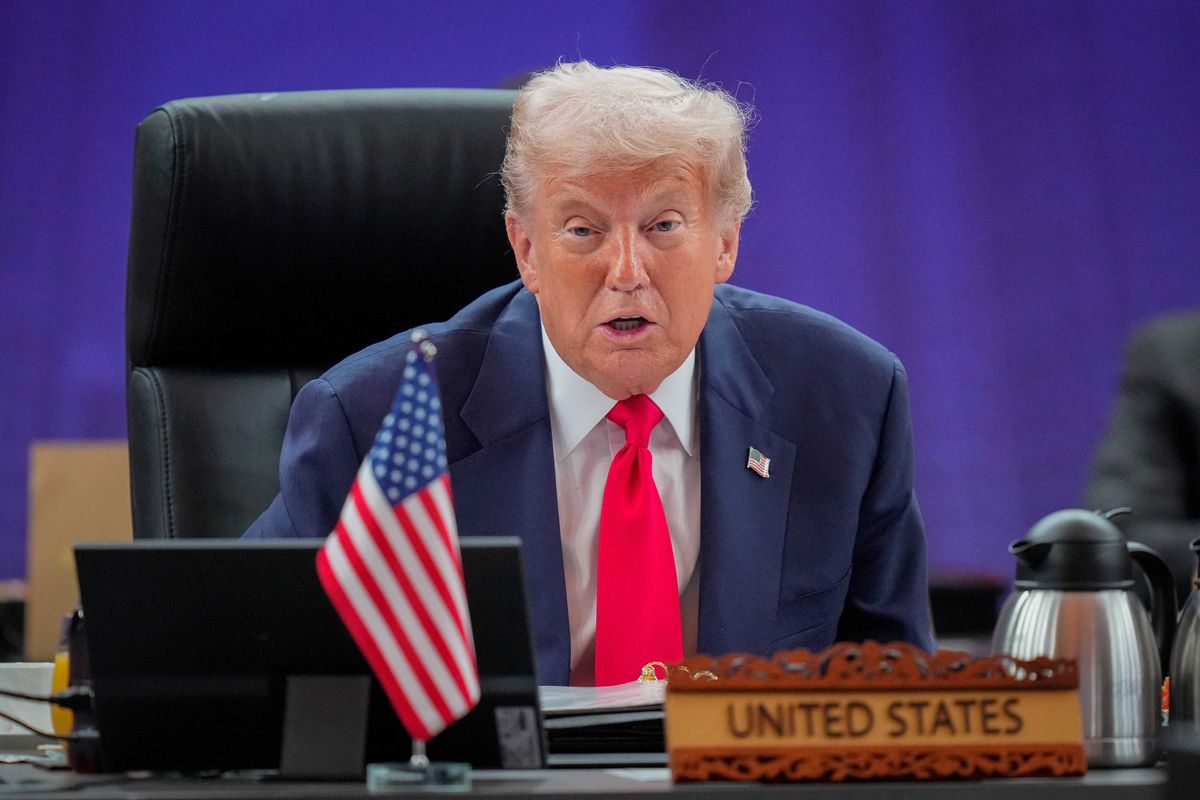Even though the summit between President Trump and Chinese dictator Xi Jinping is now over, and the U.S. and Chinese …Continue reading →
Even though the summit between President Trump and Chinese dictator Xi Jinping is now over, and the U.S. and Chinese governments (especially the Trump administration) have announced various descriptions of the results, at this point, the most reasonable conclusion seems to be that the agreements reached by the two leaders raise more questions than they answer.
One big reason for caution on judging the summit’s success or failure from a U.S. standpoint is the lack of official descriptions. No joint Sino-American statement characterizing each side’s commitments emerged from the sit-down in South Korea. Nothing comprehensive has come out yet from the White House, either.
And although news reports contain excerpts from the Chinese Commerce Ministry’s statement on the summit, I haven’t been able to find a complete English language version anywhere on-line. Even if I did, I’d wonder about the accuracy of the translation. (It wouldn’t be the first time language issues have caused U.S.-China misunderstandings. See, e.g., here.) The Commerce Ministry’s X.com account clarified nothing, either.
President Trump did put out a post on the Truth.com social media platform he controls but lots of the so-called specifics can be challenged. For example, Mr. Trump claimed that “China has agreed to continue the flow of Rare Earth, Critical Minerals, Magnets, etc., openly and freely.” But Beijing merely seems to have decided to pause for a year implementation of the extraordinarily sweeping rare earths-related export curbs it announced October 9. A previous, April, set of controls remains in place. (See here.)
Similarly, what should be made of the Trump contention that “China has strongly stated that they will work diligently with us to stop the flow of Fentanyl into our Country”? As recently as May, the president decided to keep at 20 percent the fentanyl-related tariff on China that he increased from 10 percent in March. And this as he announced a reduction of the stratospheric “Liberation Day” tariffs announced on China (and other countries) in April. (See the timeline at this link.)
Moreover, China has been promising to help end the fentanyl crisis in the United States since late 2018. What’s happened since May to lead Mr. Trump to believe that China will finally start keeping that promise? Indeed, will the president reduce the fentanyl tariff immediately? Or will he wait for some signs of actual progress? Let’s hope it’s the latter.
As a result of the summit, big questions surround U.S. policy on allowing China to buy the most advanced American-designed (by Nvidia) artificial intelligence semiconductors. These chips of course will be central to determining whether the United States or China will be the world’s greatest military power well into this century.
So it was incredibly disturbing to see President Trump, just before the summit with Xi, say that “We’ll be speaking about Blackwell, it’s the super duper chip.” The implication was that the president would permit China to buy these most advanced semiconductors from Nvidia – which would be consistent with the company’s chief Jensen Huang’s frequent pleas for a substantial relaxation of the U.S. tech export controls that have wiped out its sales in China’s huge market for semiconductors.
Now it appears that this worst hasn’t materialized. But who really knows? And how much will that matter? On the one hand, Mr. Trump said right after the meeting with Xi that “We’re not talking about Blackwell chips.” On the other hand, on the matter of these semiconductor export curbs, Mr. Trump stated that he told Xi, “I said that’s really between you and Nvidia, but we’re sort of the arbitrator.”
So it looks like China won’t get access to Nvidia’s “super duper chip.” But apparently it will still have access to a device with fewer but still impressive capabilities (the H20) – along with a comparable chip from Nvidia rival AMD. (See here.) And that’s worrisome because such semiconductors and other high tech gear, which are designed to fall just below U.S. export control thresholds, can still spur further China tech progress by providing Beijing with ever more sophisticated possibilities for reverse engineering and learning.
Not that the news emanating from the Trump-Xi summit looks uniformly bad for Americans. First, Trump’s Truth Social post stated that although “We agreed on many things…others, even of high importance [are] very close to resolved.” So some major issues still need to be negotiated.
Second, the agreements on both sides that do seem to be final are temporary. And according to the president, the agreements will be renegotiated every year. Therefore, if China breaks its word, the deals would be null and void. It’s also possible that if the United States finds violations before then, it will retaliate.
Third, some valid concerns have been expressed that halving the fentanyl tariffs could wind up undermining Trump administration efforts to prevent China from sidestepping remaining duties by exporting products to the United States surreptitiously through third countries.
As argued by Brad Setster of the Council on Foreign Relations, a former Treasury Department official (and no great fan of the Trump tariffs), the fentanyl tariff cuts would put them effectively “at the same level” as the new Trump tariffs on Southeast Asian countries – the very countries that have been China’s main tariff circumvention partners. So China’s exporters could be expected to go back to shipping their products directly from China, and non-Chinese companies would lose many of their incentives to transfer their export-oriented production out of the People’s Republic in order to avoid relatively higher U.S. duties.
At the same time, nothing in the Trump-Xi agreements appears to prevent the United States from imposing new tariffs on China that could result from – still – ongoing investigations being conducted under U.S. trade law. These probes cover big import items from China like semiconductors and semiconductor manufacturing equipment, pharmaceuticals, wind turbines, robotics and industrial machinery, and all sorts of medical equipment.
And don’t forget another trade law-related investigation – on whether China has been complying with its 2020 “Phase One” trade agreement with the United States. That was just announced last week, and unless there’s some kind of new secret Sino-American side deal, that probe will almost certainly bring on new China tariffs as well. So before long, duties on Chinese imports may once more become high enough to remove any new Chinese competitive advantage produced by the fentanyl tariff cuts – and the numerous exemptions still in place on remaining Trump 2.0 tariffs on China.
There’s no question that what’s known of the Xi-Trump deals so far has fallen short of my preliminary judgment (based on Treasury Secretary Scott Bessent’s optimistic preview just before the summit), and, frankly, short of my belief on what President Trump could have accomplished because of the vastly superior leverage the United States has always enjoyed vis-a-vis China.)
But it’s even clearer that verdicts that Mr. Trump has “chickened out again,” and has suffered a major trade war defeat (see here for one of the most hysterical) are at very best woefully premature. In fact, so far the best evaluation has come from business and economics consultant Tony Nash: “It’s the best we can hope for. That’s real diplomacy. Nobody is happy, everyone is wary and each side sells it to the home audience as victory.”








